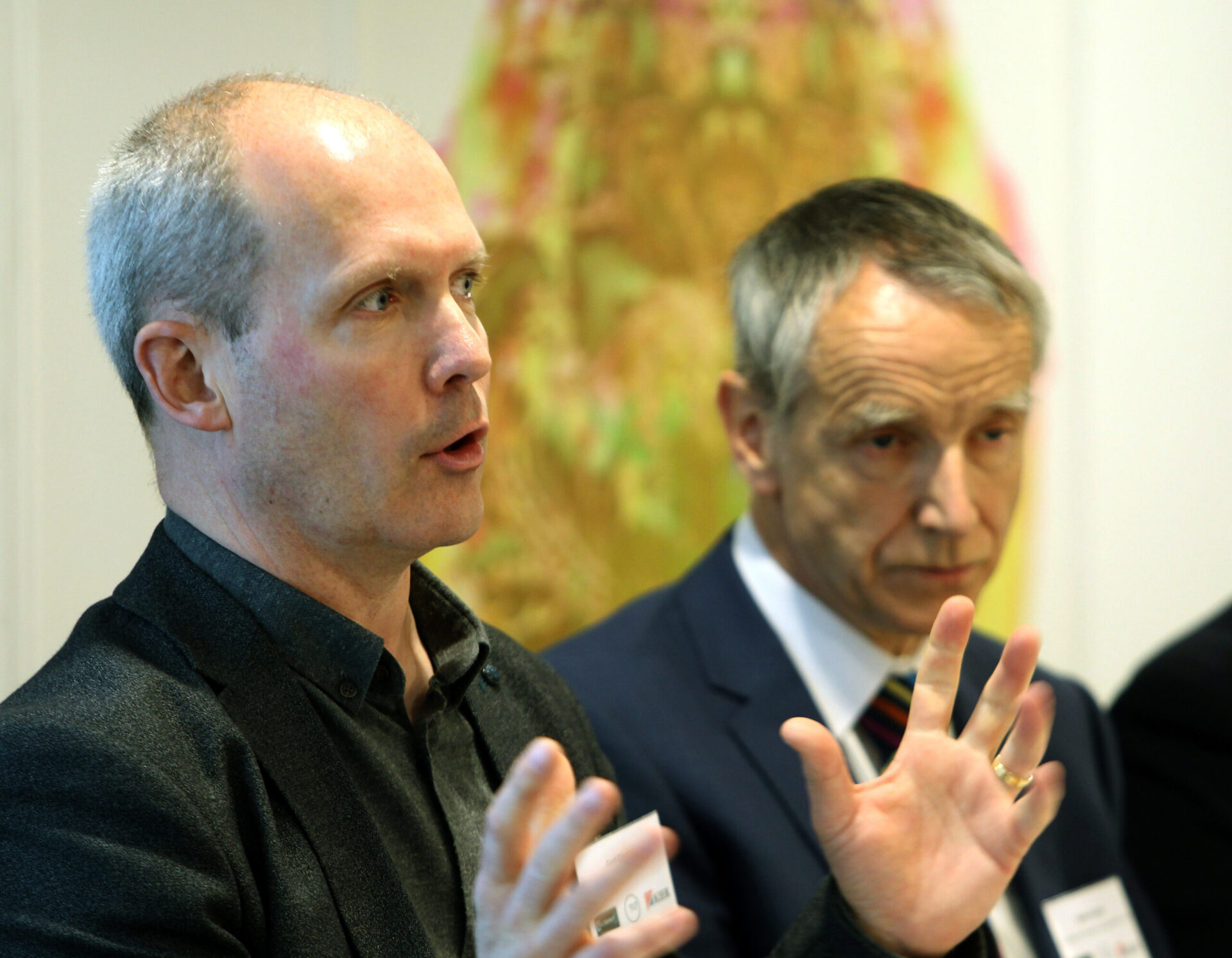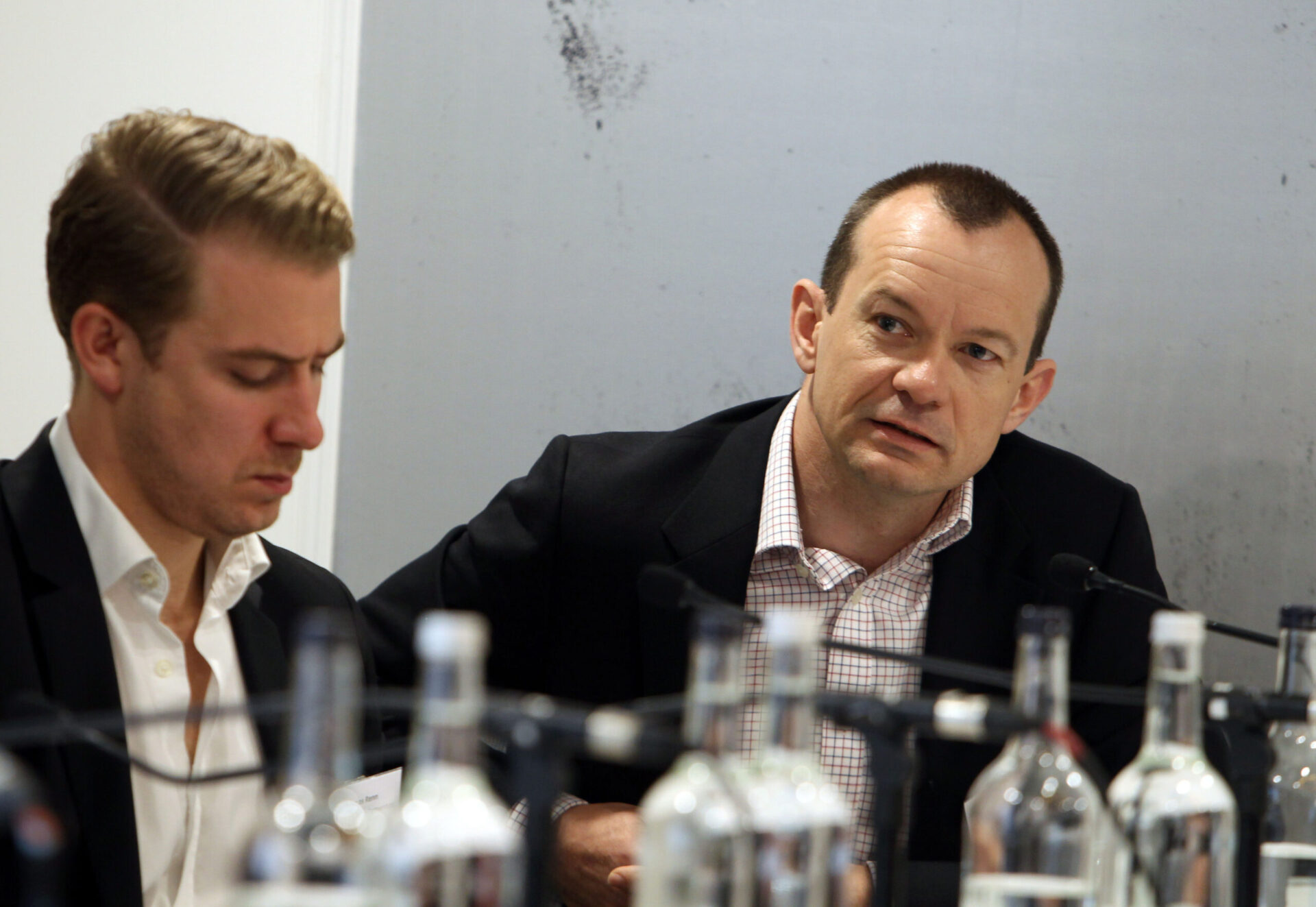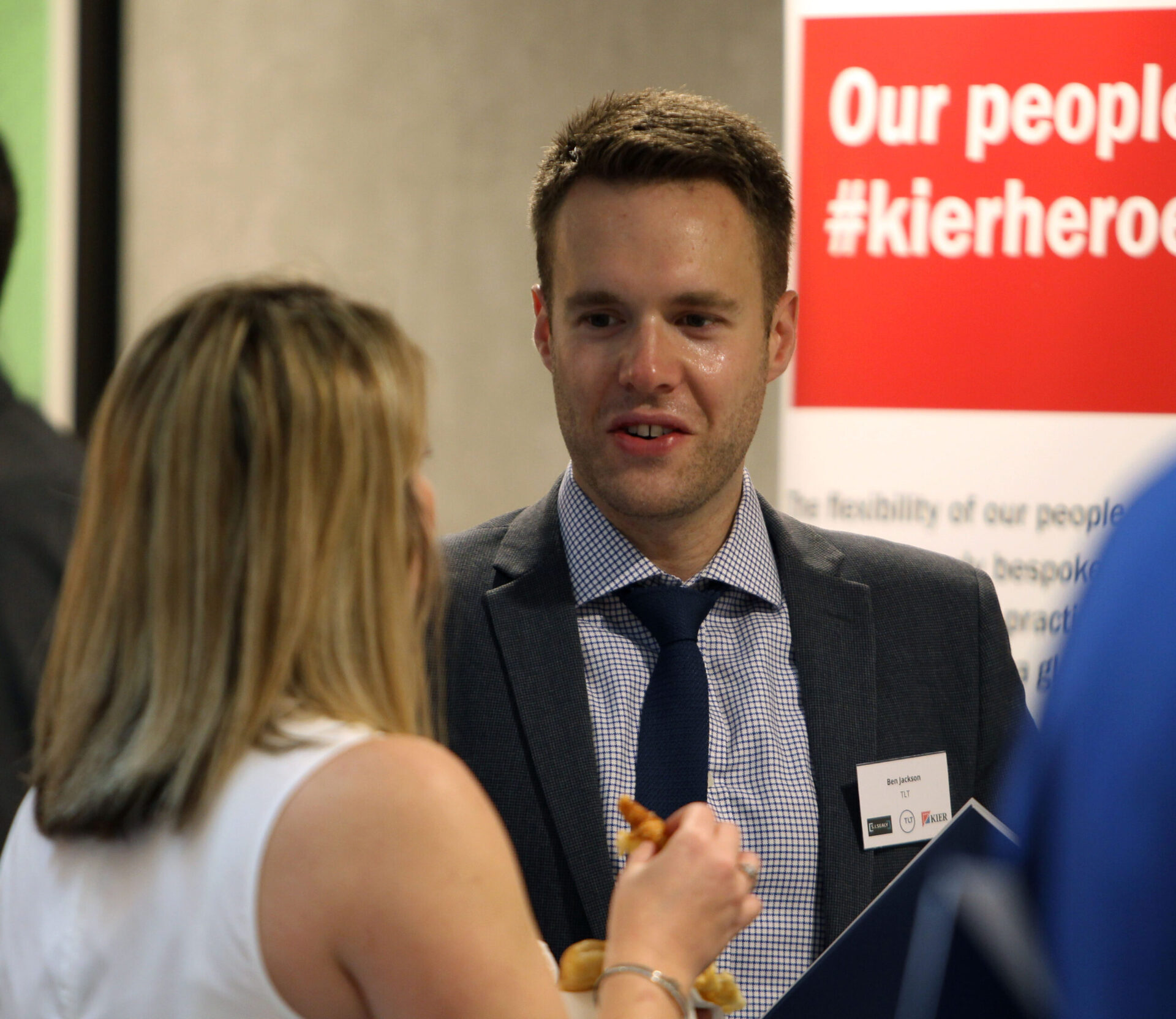Event Summary
Healthcare Property Update | Slides, summary + images
How the public and private sector can work together strategically in a challenging environment for healthcare property was a major theme at the sector briefing, sponsored by Kier, TLT and SI Sealy.
 More than 100 delegates attended the event held in Manchester city centre. The morning began with a presentation from Thomas Renn, managing director of Manchester Science Partnerships, giving an overview of MSP’s projects in Manchester and Cheshire and pointing to technology as an essential focus area for the future of healthcare.
More than 100 delegates attended the event held in Manchester city centre. The morning began with a presentation from Thomas Renn, managing director of Manchester Science Partnerships, giving an overview of MSP’s projects in Manchester and Cheshire and pointing to technology as an essential focus area for the future of healthcare.
He was then joined on a panel by Ged Couser, principal at BDP Architects; Mike Moran, chief executive of Proton Partners International; Paul Warwick, development manager at Assura; Kevin Eccles, head of development programme, Countess of Chester Hospital.
See below for link to Thomas Renn’s presentation + images
The discussion centred around collaboration, across primary and secondary healthcare, life sciences, biomedicine, and digital industry, as well as how to deliver efficiencies in estates and bring forward new developments in a difficult funding climate.
Opportunities
- The panel agreed the NHS can utilise expertise within the private sector, drawing on the experience of professionals and seeking their advice, even before the procurement process
- Eccles said he believed the private sector can provide a strategic overview, helping the NHS to learn from work already done and to provide ideas for healthcare sites to be used more effectively
- Moran’s Proton Partners is building a network of cancer centres around the UK, with a £35m scheme under planning in Liverpool. He described the NHS as “the biggest business in Europe” but said it “doesn’t think like a business”
Transforming primary care
- With a property portfolio of £1.35bn, Assura works with a large proportion of the 7,500 GP practices in the UK. According to Warwick, many primary care facilities are old, Victorian or were purpose built in the 1960s, so not fit for purpose
- Improving facilities at primary care level can shift services from central care and acute sites, easing pressure and transforming neighbourhoods and communities
- Panellists suggested healthcare property needs to house community-based services and wider commercial uses to improve viability
- Assura’s recently completed £10m diagnostic centre in Durham is an example of this, introducing renal care within its local provision of services, reducing the need on City Hospital Sunderland Foundation Trust
How does NHS benefit from partnership?
- Eccles stressed the private sector has a role to play in developing the NHS and helping it to turnaround the property challenges
- Proton Partners can operate as a private investor with access to capital, working in partnership with NHS to bridge the financial gaps
- According to Renn, MSP is providing growth services along with funding to companies that have the ability to transform the lives of patients, bringing technology into the healthcare market, with the potential to change the fabric of cities as well as the NHS
- BDP’s Ged Couser said larger projects seen more commonly in the past are now few and far between. Much of the practice’s work is now focused on masterplanning for Trusts, working on controlled estates and making maximum use of NHS property
- At Alder Hey Children’s Hospital, Couser said Liverpool dealt with the Trust in an entrepreneurial way, with a progressive deal to build the hospital on a greenfield site, then designing a new residential scheme of 400 homes alongside to bring a capital return
Growing commercial offers
- Joined-up activity is a definite business trend in the collaboration between the private sector and the NHS, said Assura’s Warwick
- Primary care facilities are incorporating leisure centres, community buildings and libraries. They are less clinical and are now more focused on delivering wider
- Eccles said consultation is vital, and it is important that resources are focused in the right areas; without the right assessment expensive facilities can end up being underutilised
- Couser said healthcare projects impact not just economic regeneration but social regeneration, as many estates are in urban areas
- Healthcare has to be more holistic, stressed Moran. “It’s important to understand the needs of patients, and to ensure they feel treated as a person.”
Design
- Eccles, Renn and Moran agreed it’s important to work with designers as early as possible in the process of development
- How patients access their care is the key question – at the heart of the design ambition is to ensure that everything revolves around the patient, from lighting to layout, facilities and resources
- It’s vital developers ask questions like how far patients need to travel, where they can stay and how far from their families they are, said Moran
Political perspective – does an election make planning harder?
- One of the biggest challenges is to encourage the NHS to see property as an enabler for change, said Warwick. More services need to be brought into the community.
- A more strategic overview needs to be delivered said Eccles, and there has been creative impetus given by the Naylor review into NHS property and estates
- There is always uncertainty in the market, said Moran, however there’s a need to focus on investment in infrastructure, like old hospitals and prisons.
- Despite working within the shifting environment of the NHS, Eccles pointed out that there is always an external influence and external risk, but to follow the simple mantra that “if what you’re doing makes sense, carry on doing it”
- Local authorities are an important part of the process. Liverpool City Council was a vital partner for the success of Alder Hey, while Proton Partners engages with local authorities from the beginning for all its developments
Achieving efficiency with limited funds
- Commercial partners can work more creatively and secure financial models public partners cannot. For example, Proton Partners secured £10m from Wales Life Sciences Investment Fund, and was then able to approach the private investors of the fund to take an equity stake, enabling the company to quickly raise the capital for its first centres
- These models put less pressure on public finances, and create sustainable projects and opportunity
- For Assura, securing a capital injection means it can invest in new developments and consider the whole lifespan of a building, and design for that. This allows them to take a long term view as an investor, without having to focus on massive returns
Greater Manchester’s devolved health & social care budget
- Devolved power means decisions can be made locally to make a real difference
- “It’s a once in a lifetime opportunity”, said Renn. The industry as a whole is looking to Manchester as a great experiment, and the new structure could also make it easier for technology to be adopted in the sector, he said
- Devolution in other areas could help the NHS face its challenges, said Eccles, but relationships need to be developed and conversation needs to continue.
- A city should be in charge of its own healthcare, said Moran. Choices have to be sensibly made and developments can grow
To view Thomas Renn’s presentation click here
Select any image below to launch gallery
- Thomas Renn, Manchester Science Partnerships
- Panel, from left: Ged Couser, BDP; Kevin Eccles, Countess of Chester Hospital NHS Trust; Mike Moran, Proton Partners; Thomas Renn, Manchester Science Partnerships; Paul Warwick, Assura
- Panel, from left: Ged Couser, BDP; Kevin Eccles, Countess of Chester Hospital NHS Trust; Mike Moran, Proton Partners; Thomas Renn, Manchester Science Partnerships; Paul Warwick, Assura
- Ged Couser, BDP
- Kevin Eccles, Countess of Chester Hospital NHS Trust
- Mike Moran, Proton Partners
- Paul Warwick, Assura






















